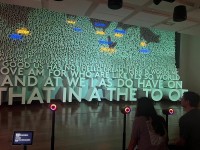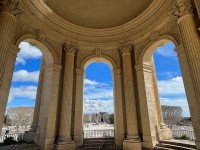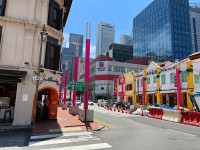
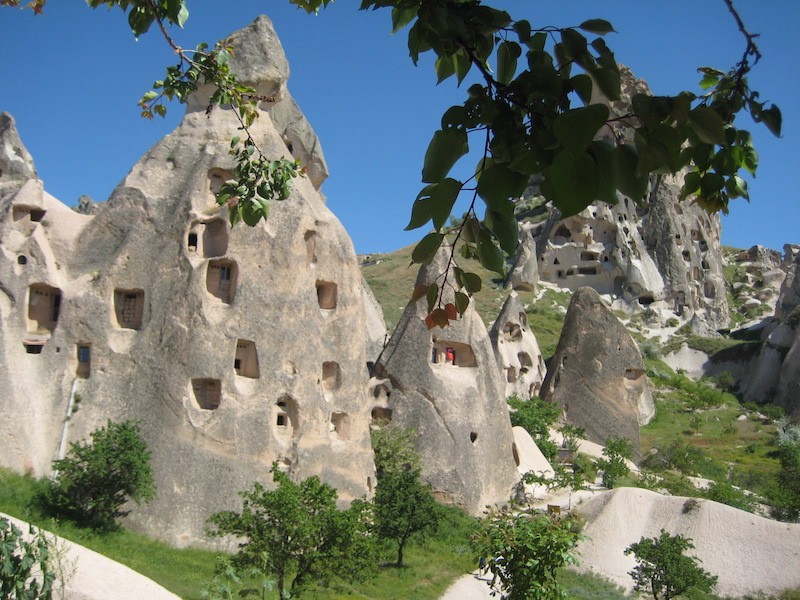 Turkey
Turkey
Of People and Places: Rose Valley and tufa hills in Turkey
I was travelling solo from Istanbul to Cappadocia by an overnight bus. None of the passengers seemed to understand a word of English. There was only one stop-over at midnight somewhere in the more than ten hour long journey. I followed the women to the washroom, bought something to munch on, without a word uttered. My seat was almost on the last row and a bit uncomfortable. But all the discomfort disappeared as I woke up as dawn broke and through the window got the first glimpse of Cappadocia. Was it how the moonscape looked like, filled with the stark snuff-coloured hills, some looking like gigantic ant hills? My imagination ran riot. But then it was the much talked- about land of the Fairy Chimneys I reminded myself.
The tour company I had booked beforehand had sent a car to the station to pick me up. By now the feeling of unreality settled down somewhat as I arrived in Urgup, a thriving little town, and checked into a hotel which was once a Greek monastery, no less. In 1923, after prolonged conflicts between the two countries , an exchange of populations - ‘Mübadele’ happened. So in Turkey you would find lots of such properties left behind, as must be in Greece too. Whenever this topic comes up- ‘exchange of population’- anywhere, and the accompanying trauma of losing one’s land and livelihood, after centuries of living in a place, somehow it brings to mind the year 1947 in our sub-continent, even if not that bloody.

If I had looked forward to a bit of rest after a whole night’s journey it was not to be. The people at the reception were very friendly, served me Turkish style tea in glass cups but informed me that the tour guide was meeting me in half an hour to go to the Rose Valley, please leave behind your luggage here, don’t worry. Well, packaged tours have their own limitations.
But as I trekked with other tourists four kilometers down the cornflower-blooming Rose Valley I forgot my tiredness. It was a land of unusual beauty interspersed with hillocks which turned colours from red to ochre and more, rising up from the ground. Thousands of years ago, central Anatolia was covered by ashes from volcanoes Erciyes, Hasan Dag and Gullu Dag. With time, elements of nature chipped away the softer portions of the mounds and in its place left these conical hills made of cooled lava – tufa, as locals call it, which hardened at contact with air.
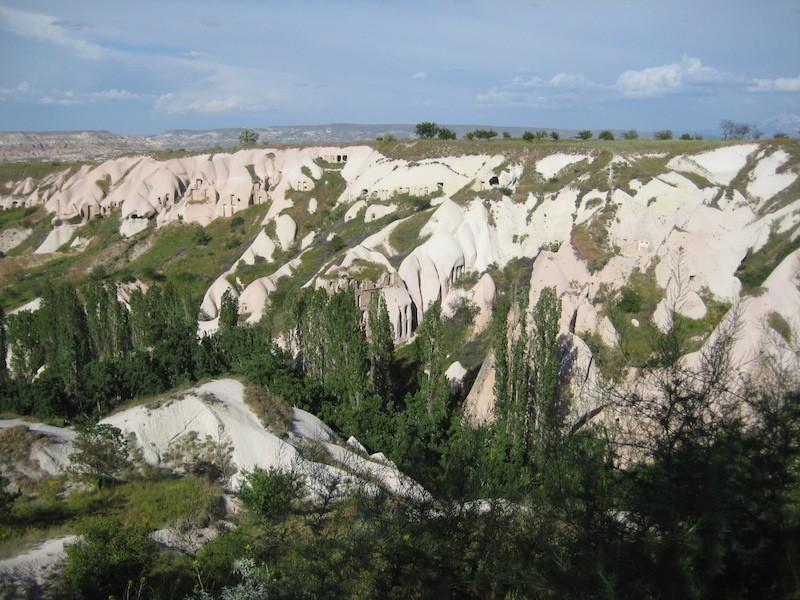
At places I slipped on the soft tufa trails where water , perhaps from last night’s rain, made small pools. I was afraid of breaking my leg, I was travelling alone, and I had to get back home in one piece. But two young men in the group looked after me very well indeed, holding my hand whenever necessary. Actually, I have found many times while travelling alone, and I am no spring chicken, that kind souls are always around and a friendly smile goes a long way.

On the trek we sampled sun-dried apricots and nuts an enterprising peasant was selling. On a stop-over we drank glasses of freshly made pomegranate juice. Just heavenly.
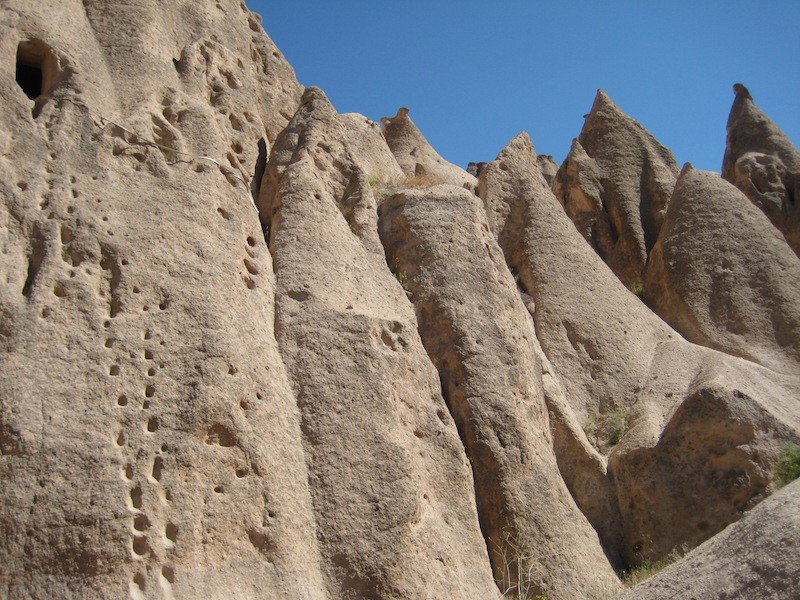
It is a land that shows how unpredictably nature can act. But even more, a wonder how humans adapt and survive amidst hostile landscapes. Impossible though it would seem, this stark volcano-created valley has been inhabited continually from the wake of civilization. Invaders had passed through the land which bridges the east and the west–the early Hittites, Phrygians, Byzantines, Seljuks, Greeks, Romans, and later the Ottomans, leaving behind remnants of their cultures and genes to make Cappadocia a haven for anthropologists and archaeologists.
At different times, the local people resorted to their own devices to survive. The early Christians hid from persecution of Roman soldiers and later Arab invasions in these underground villages too as well as in caves in the conical hills.
As enemies entered the region, they hid in underground villages, sometimes for months, dug into the soft layers of land. Our guide warned beforehand that people with claustrophobia or asthma should avoid going in. I hesitated because sometimes I felt chocked in close space but what the hell, there is only one life. So I bent, crawled and stumbled through labyrinthine passages interlinking the rooms at the Derinkuyu underground town, built during the Byzantine era to protect themselves from Arabs during the Arab-Byzantine wars between 780 and 1180 CE.
It could hold approximately 20,000 people and livestock too at a time. Giant millstones blocked the interlinking passages to keep away intruders. To warn the enemy approaching, on the surface were watch points where guards used glasses to reflect sunlight and warn the farmers outside. The communes had everything organized: air shafts for fresh air to flow in, living quarters, granaries, wineries, tandoors for bread making, even for storing nightsoil in clay pots and covered with mud which were broken open and the content used as fertiliser once it was safe to come out from the caves.
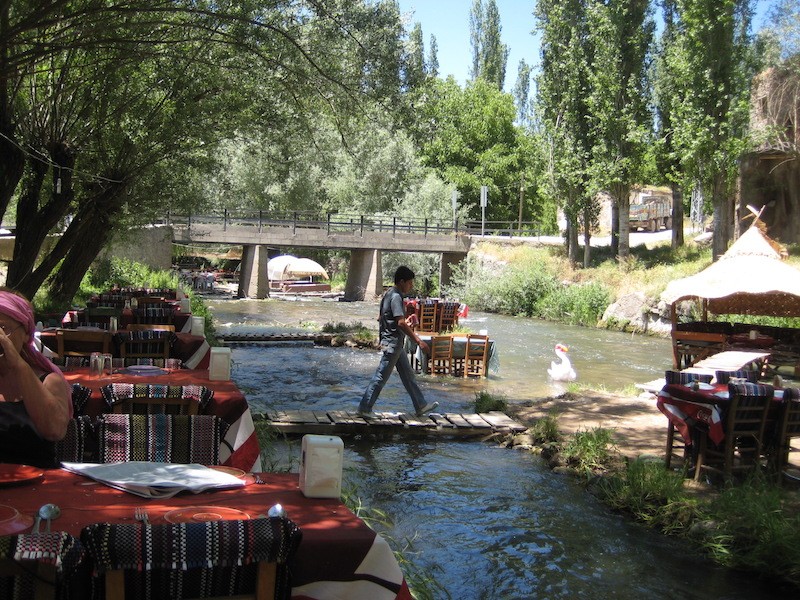
The Goreme Open Air Museum (Christians called it ‘Gor emi’ – ‘you cannot see this place’), a whole complex of monasteries with schools, churches, living quarters carved into the volcanic rock-hills. The beautiful frescoes on Christ’s life in Byzantine style at Tokali Kilise or the ‘Buckle Church’ somehow reminded me of Ajanta caves where Buddhists hid and painted while escaping from the backlash of the Hindu revivalist kingdoms.
Cappadocia has this effect on you. In the Monk’s Valley at Pasabag, the mushroom-shaped chimneys looked to me like veiled women with loads on their heads. The pock marks on them were actually doors to homes where Christian hermits used to stay and pray, going up the steps-rather grooves, on the sheer rock-face every day. They must have had been superbly fit indeed. They did not need help of gyms clearly!
Another wonder was the Pigeon Valley near Uchisar, a white complex of hills with hundreds of holes in them. The Romans used the humble birds as messengers but the villagers learnt something more. There is no water source nearby, only some underground holes. So they built dove cotes in the tufa hills and collected the guano for use as fertiliser. Even today someone told me though chemical fertiliser is widely used, some villagers still collect guano; they claim the lovely taste of the fruits of the valley is a result of this non-chemical fertiliser. The Christians also used the white of the eggs for their frescoes. So there!
On another day I took trip the Ihlara Valley where Christians built rock-cut churches. The snow-capped Mount Hasan with its volcano looked magnificent on way to the site. Would it spew ashes again, I wondered, as it did 10,000 years ago? Who knows, nature keeps many secrets hidden in her breast.
(Recently, I read that scientists were worried if the earthquakes in 2021could make the volcanoes become alive again. ) Central Anatolia of Turkey is one of the most earthquake areas in the world, after all.
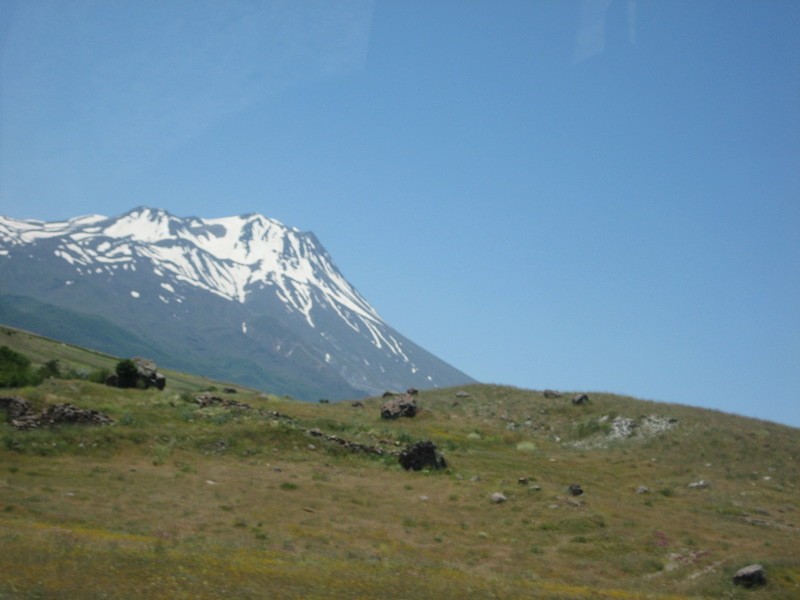
Ihlara Valley is actually a 15 km long canyon. In its rocks Christian monks built their churches and lived a simple ascetic life between 4th to 13th centuries D.C. More than a hundred hidden cave churches were discovered later. Now as I looked at the walls of some of them decorated with Byzantine time frescoes, colours still visible showing after centuries, it brought a lump to my throat.
How people aspire to create beauty even under the most dire conditions! Christine, a 60 plus tourist from France with whom I had made friends, agreed that’s what sets man apart from animals. She talked about the cave paintings at France’s Lascaux- not this fine maybe but a creative expression nonetheless, created somewhere around 20,000 years back, as archaeologists say.
Sitting under a huge rock at the 13th century Selime Monastery, one of the biggest, and looking down at the valley with its conical hills, the sense of wonder again gripped me. How nature and man combined to create a world of its own.
After all the walking, hunger pangs sent warning signals. Lunch itself was another treat. Lolling on huge cushions in a floating ‘restaurant’ on a stream of the Melendiz River that courses through the canyon, we gorged on freshly grilled trout from the river accompanied by a vegetable platter. A perfect ending to the day, indeed.
Christine invited me to visit her to explore the Lascaux network of cave paintings. Many years have passed since that Cappadocia visit ; and it is yet to happen. But who knows!
Top Headlines
-
Travel
Egypt returns to IFTM Paris 2025 with new travel experiences
September 25, 2025
-
Travel
Royal Sonesta Chicago Downtown: A frontrow river view and urban comfort in the windy citys heart
August 17, 2025
-
Travel
Sri Lanka: Arching to the sky
August 14, 2025
-
Travel
Hotel AKA Washington Circle: 'Residential luxury' close to DC's beating heart
June 24, 2025
-
Travel
Sri Lanka: An offbeat itinerary in a destination for all seasons
May 23, 2025
-
Travel
In crust you trust: Pizzeria Paradiso in Washington DCs Georgetown is mood-lifter
April 18, 2025
-
Travel
Washington DC: Cherry Blossom Rush
April 04, 2025
-
Travel
Take a vibrant journey at Chicago's 'The Orchid Show: India Blooms'
February 10, 2025
-
Travel
Take a vibrant journey at Chicago's 'The Orchid Show: India Blooms'
February 10, 2025
-
Travel
Pompeii: Lying under the ashes
November 19, 2024



